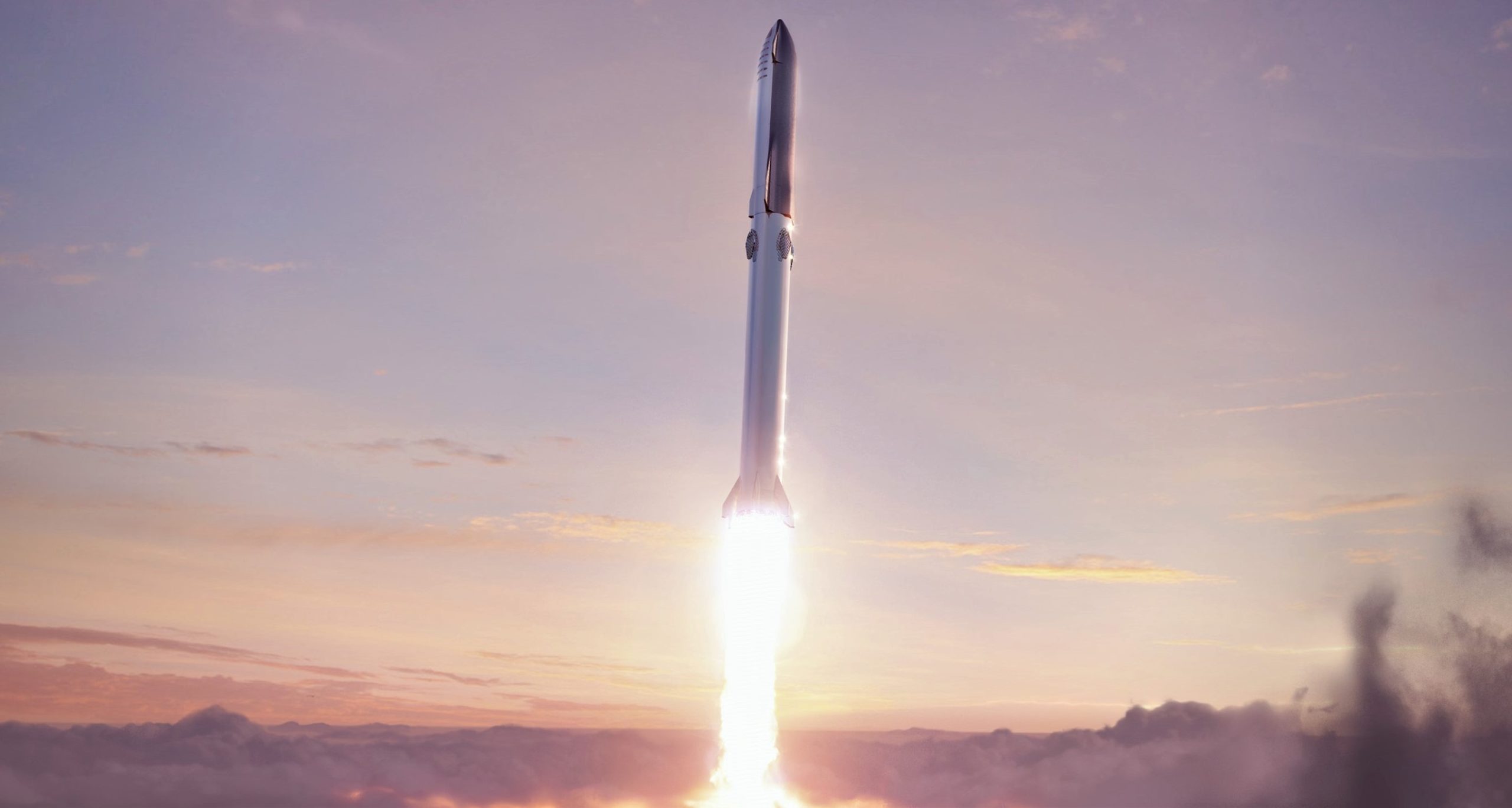
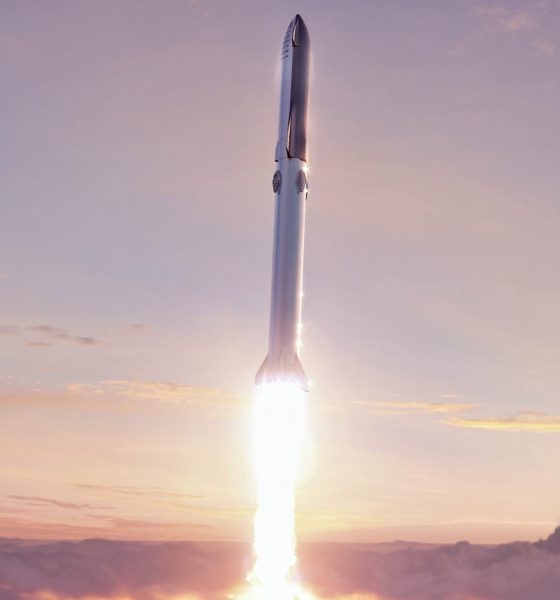
News
SpaceX’s Starship Super Heavy booster needs a custom assembly tower
SpaceX CEO Elon Musk has confirmed that Starship’s Super Heavy rocket booster will get its own tower-like vehicle assembly building (VAB) – and work on the structure may have already begun.
While the only visible work SpaceX has thus far completed on its next-generation Starship launch vehicle is related to the more complex and unproven upper stage of the rocket, its Super Heavy first stage (booster) is just as critical. For SpaceX, Starship was the perfect starting point, itself following on the footsteps of a largely successful multi-year Raptor engine development program. Substantially smaller than Super Heavy and requiring 5-10 times fewer engines, Starship serves as a testbed for an almost entirely new suite of technologies and strategies SpaceX is employing to build massive rockets out of commodity steel.
In recent months, particularly following the first successful pressure test of a full-scale Starship tank section in April, SpaceX has effectively proven that those uncharacteristically cheap and simple materials and methods can, in fact, build rocket structures that should stand up to orbital spaceflight. In theory, aside from the booster’s 31-engine thrust structure, the same methods and materials used to build Starships can be applied unchanged to manufacture Super Heavy. The booster’s almost unfathomable size, however, will necessitate its own dedicated assembly facilities.
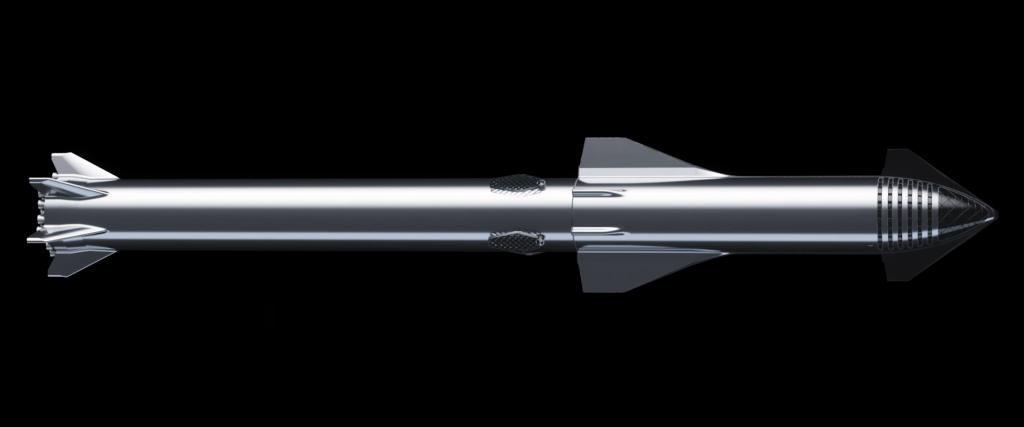
While Starship itself is not exactly small at ~50m (165 ft) tall and 9m (30ft) wide, the Super Heavy booster tasked with launching the ship on its way to orbit will easily be the largest individual rocket stage ever built. Currently expected to measure 70m (230 ft) tall, Super Heavy – just the first stage of the Starship launch vehicle – will already be as tall as an entire Falcon 9 or Falcon Heavy and weigh roughly three times more than the latter triple-booster rocket when fully fueled. At liftoff, Super Heavy will produce more than triple the thrust of Falcon Heavy and double the thrust of Saturn V, the most powerful liquid-fueled rocket to reach orbit.
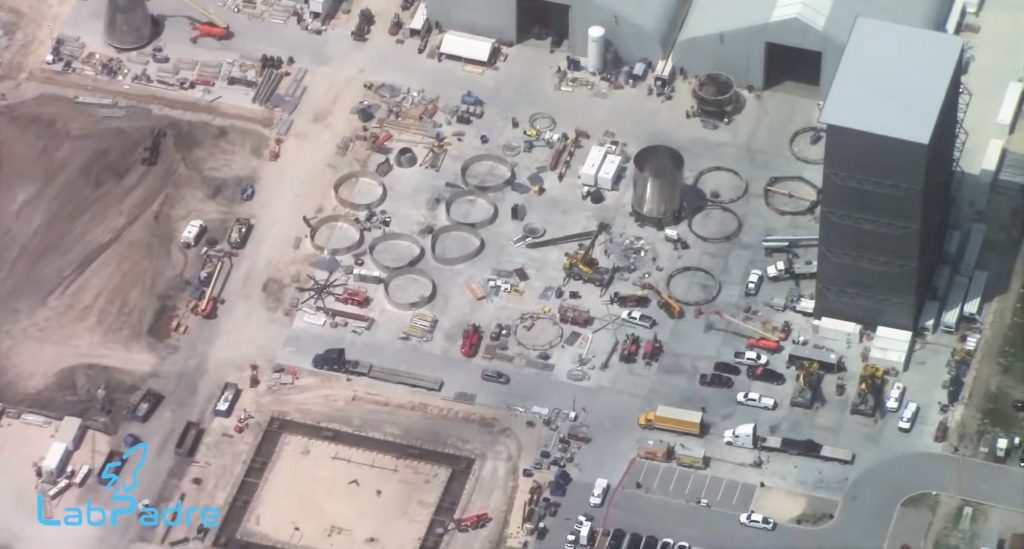
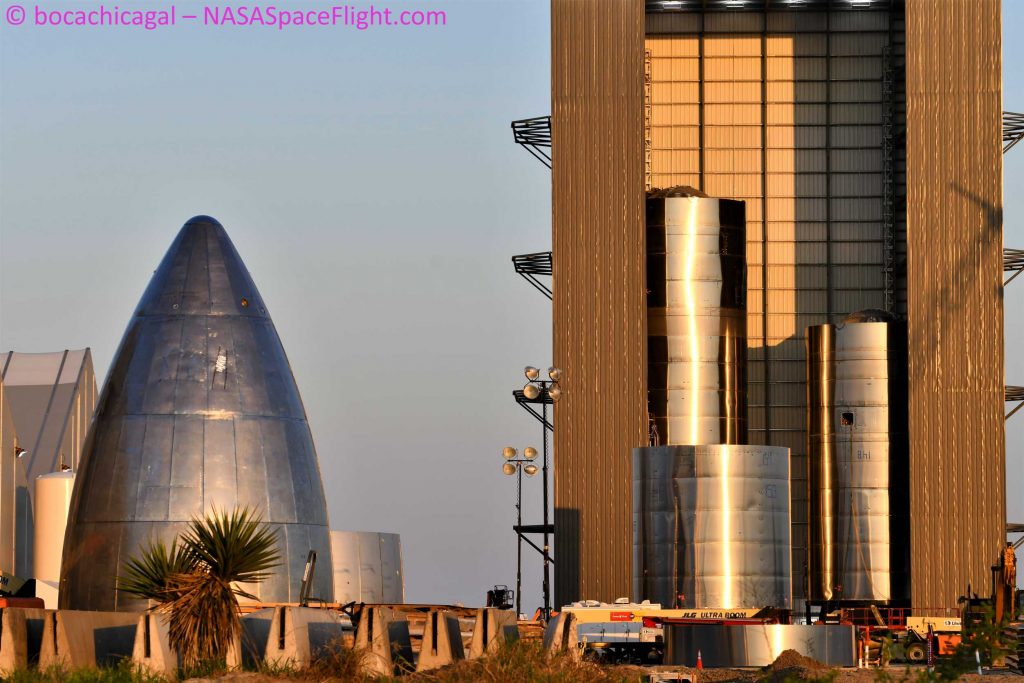
Thanks to the sheer size of the booster, SpaceX’s existing Starship-sized vehicle/vertical assembly building (VAB) is far too small for Super Heavy and is even too short to fully stack a ~50m Starship. SpaceX’s contractor of choice started assembling that VAB around January 15th and the facility was able to begin supporting its first Starship stacking and welding operations on March 2nd, just a month and a half later, with the structure fully completed by March 18th. As such, assuming the in-work foundation is as close to completion as it seems and SpaceX uses the same contractor for the next building, Super Heavy’s VAB could be ready to build the first massive booster prototype as early as July or August. Things could take a bit longer given that Musk says the booster VAB will be 81m (265 ft) tall, nearly twice the height of Starship’s VAB, but likely by no more than a few weeks.
That timeline meshes well with a senior SpaceX engineer and executive’s recent suggestion that the first orbital Starship launch attempt could still happen before the end of the year. Of course, for Super Heavy to become a genuine priority for SpaceX and receive the resources necessary to achieve that extremely ambitious goal, Starship will have to perform almost flawlessly during a series of increasingly challenging tests planned over the next few months. First up, SpaceX needs to finish repairing the launch pad after Starship SN4 exploded during testing and Starship SN5 needs to be transported to the pad to complete acceptance tests, static fire(s), and its first 150m (~500 ft) hop test. After that, SpaceX will either move on to a 2 km (1.25 mi) hop or a more ambitious 20 km (12.5 mi) flight designed to test Starship’s skydiver-like approach to landing.
If Starship SN5 or SN6 manage to complete those aforementioned tests, the horse may actually be in front of the cart for Super Heavy prototype production and Starship’s first orbital launch attempt.
Check out Teslarati’s Marketplace! We offer Tesla accessories, including for the Tesla Cybertruck and Tesla Model 3.

News
Man credits Grok AI with saving his life after ER missed near-ruptured appendix
The AI flagged some of the man’s symptoms and urged him to return to the ER immediately and demand a CT scan.

A 49-year-old man has stated that xAI’s Grok ended up saving his life when the large language model identified a near-ruptured appendix that his first ER visit dismissed as acid reflux.
After being sent home from the ER, the man asked Grok to analyze his symptoms. The AI flagged some of the man’s symptoms and urged him to return immediately and demand a CT scan. The scan confirmed that something far worse than acid reflux was indeed going on.
Grok spotted what a doctor missed
In a post on Reddit, u/Tykjen noted that for 24 hours straight, he had a constant “razor-blade-level” abdominal pain that forced him into a fetal position. He had no fever or visible signs. He went to the ER, where a doctor pressed his soft belly, prescribed acid blockers, and sent him home.
The acid blockers didn’t work, and the man’s pain remained intense. He then decided to open a year-long chat he had with Grok and listed every detail that he was experiencing. The AI responded quickly. “Grok immediately flagged perforated ulcer or atypical appendicitis, told me the exact red-flag pattern I was describing, and basically said “go back right now and ask for a CT,” the man wrote in his post.
He copied Grok’s reasoning, returned to the ER, and insisted on the scan. The CT scan ultimately showed an inflamed appendix on the verge of rupture. Six hours later, the appendix was out. The man said the pain has completely vanished, and he woke up laughing under anesthesia. He was discharged the next day.
How a late-night conversation with Grok got me to demand the CT scan that saved my life from a ruptured appendix (December 2025)
byu/Tykjen ingrok
AI doctors could very well be welcomed
In the replies to his Reddit post, u/Tykjen further explained that he specifically avoided telling doctors that Grok, an AI, suggested he get a CT scan. “I did not tell them on the second visit that Grok recommended the CT scan. I had to lie. I told them my sister who’s a nurse told me to ask for the scan,” the man wrote.
One commenter noted that the use of AI in medicine will likely be welcomed, stating that “If AI could take doctors’ jobs one day, I will be happy. Doctors just don’t care anymore. It’s all a paycheck.” The Redditor replied with, “Sadly yes. That is what it felt like after the first visit. And the following night could have been my last.”
Elon Musk has been very optimistic about the potential of robots like Tesla Optimus in the medical field. Provided that they are able to achieve human-level articulation in their hands, and Tesla is able to bring down their cost through mass manufacturing, the era of AI-powered medical care could very well be closer than expected.
News
Tesla expands Model 3 lineup in Europe with most affordable variant yet
The Model 3 Standard still delivers more than 300 miles of range, potentially making it an attractive option for budget-conscious buyers.

Tesla has introduced a lower-priced Model 3 variant in Europe, expanding the lineup just two months after the vehicle’s U.S. debut. The Model 3 Standard still delivers more than 300 miles (480 km) of range, potentially making it an attractive option for budget-conscious buyers.
Tesla’s pricing strategy
The Model 3 Standard arrives as Tesla contends with declining registrations in several countries across Europe, where sales have not fully offset shifting consumer preferences. Many buyers have turned to options such as Volkswagen’s ID.3 and BYD’s Atto 3, both of which have benefited from aggressive pricing.
By removing select premium finishes and features, Tesla positioned the new Model 3 Standard as an “ultra-low cost of ownership” option of its all-electric sedan. Pricing comes in at €37,970 in Germany, NOK 330,056 in Norway, and SEK 449,990 in Sweden, depending on market. This places the Model 3 Standard well below the “premium” Model 3 trim, which starts at €45,970 in Germany.
Deliveries for the Standard model are expected to begin in the first quarter of 2026, giving Tesla an entry-level foothold in a segment that’s increasingly defined by sub-€40,000 offerings.
Tesla’s affordable vehicle push
The low-cost Model 3 follows October’s launch of a similarly positioned Model Y variant, signaling a broader shift in Tesla’s product strategy. While CEO Elon Musk has moved the company toward AI-driven initiatives such as robotaxis and humanoid robots, lower-priced vehicles remain necessary to support the company’s revenue in the near term.
Reports have indicated that Tesla previously abandoned plans for an all-new $25,000 EV, with the company opting to create cheaper versions of existing platforms instead. Analysts have flagged possible cannibalization of higher-margin models, but the move aims to counter an influx of aggressively priced entrants from China and Europe, many of which sell below $30,000. With the new Model 3 Standard, Tesla is reinforcing its volume strategy in Europe’s increasingly competitive EV landscape.
News
Tesla FSD (Supervised) stuns Germany’s biggest car magazine
FSD Supervised recognized construction zones, braked early for pedestrians, and yielded politely on narrow streets.
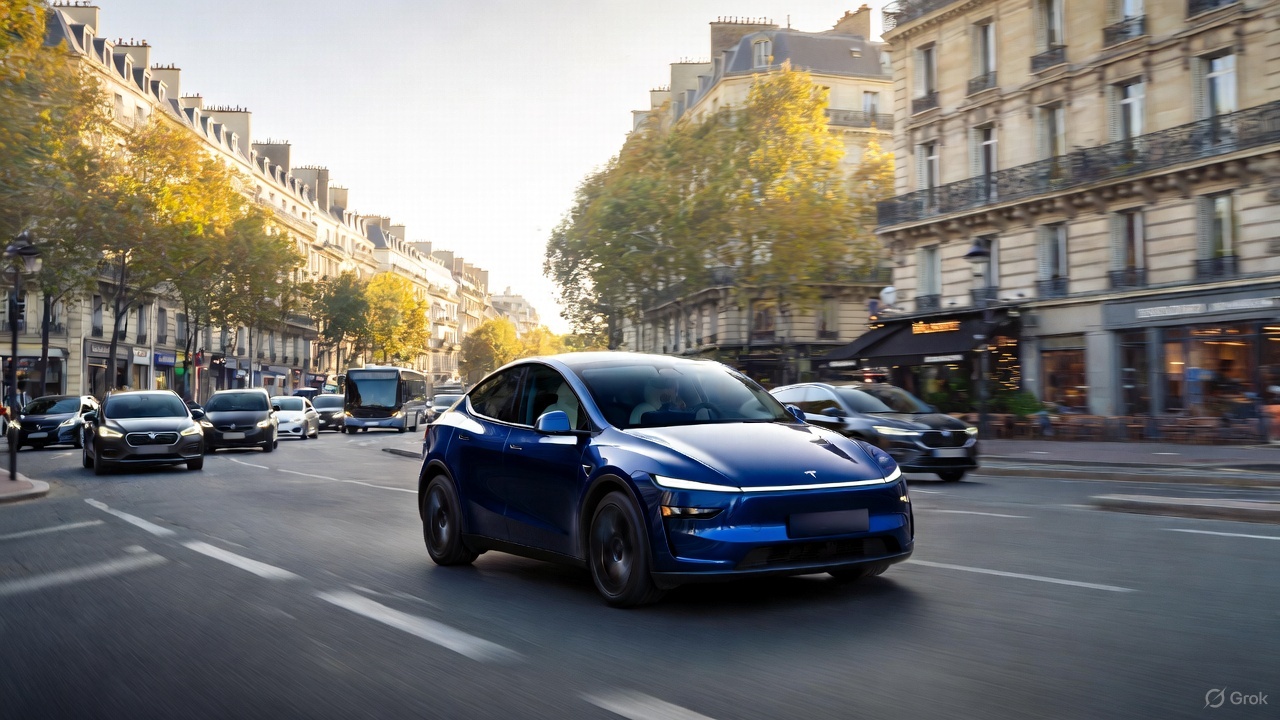
Tesla’s upcoming FSD Supervised system, set for a European debut pending regulatory approval, is showing notably refined behavior in real-world testing, including construction zones, pedestrian detection, and lane changes, as per a recent demonstration ride in Berlin.
While the system still required driver oversight, its smooth braking, steering, and decision-making illustrated how far Tesla’s driver-assistance technology has advanced ahead of a potential 2026 rollout.
FSD’s maturity in dense city driving
During the Berlin test ride with Auto Bild, Germany’s largest automotive publication, a Tesla Model 3 running FSD handled complex traffic with minimal intervention, autonomously managing braking, acceleration, steering, and overtaking up to 140 km/h. It recognized construction zones, braked early for pedestrians, and yielded politely on narrow streets.
Only one manual override was required when the system misread a converted one-way route, an example, Tesla stated, of the continuous learning baked into its vision-based architecture.
Robin Hornig of Auto Bild summed up his experience with FSD Supervised with a glowing review of the system. As per the reporter, FSD Supervised already exceeds humans with its all-around vision. “Tesla FSD Supervised sees more than I do. It doesn’t get distracted and never gets tired. I like to think I’m a good driver, but I can’t match this system’s all-around vision. It’s at its best when both work together: my experience and the Tesla’s constant attention,” the journalist wrote.
Tesla FSD in Europe
FSD Supervised is still a driver-assistance system rather than autonomous driving. Still, Auto Bild noted that Tesla’s 360-degree camera suite, constant monitoring, and high computing power mark a sizable leap from earlier iterations. Already active in the U.S., China, and several other regions, the system is currently navigating Europe’s approval pipeline. Tesla has applied for an exemption in the Netherlands, aiming to launch the feature through a free software update as early as February 2026.
What Tesla demonstrated in Berlin mirrors capabilities already common in China and the U.S., where rival automakers have rolled out hands-free or city-navigation systems. Europe, however, remains behind due to a stricter certification environment, though Tesla is currently hard at work pushing for FSD Supervised’s approval in several countries in the region.








